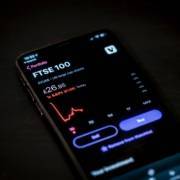Building Financial Literacy with Simulations: From Classroom to Trading Floor
Financial literacy, the ability to understand and make informed decisions about money management, investment, and finance, is critical in today’s complex economic environment. Traditional methods of imparting financial knowledge, such as lectures and textbook learning, may be less effective in translating theoretical knowledge into real-world skills. This is where simulations come in. They offer a hands-on, dynamic approach to financial education that can bridge the gap between the classroom and the trading floor.
Simulating Real-Life Market Scenarios
Financial simulations mimic real-life market scenarios, providing a realistic and engaging platform for learning. They offer a safe environment to understand the mechanics of financial markets, experiment with different strategies, and see the impact of their decisions without the risk of actual financial loss.
CapitalWave, through its Finance Lab Software, has developed a range of simulation platforms to cater to different facets of financial learning. Their simulations are geo-centric in focus, recognizing that financial markets are global and learning should take a global perspective. They are also dynamic and flexible, simulating various economic outcomes such as Bull, Bear, Flat, Volatile and Flat/Bull markets. This diversity allows for unlimited variations in simulations, thereby providing a comprehensive learning experience that reflects the complexity of real-world financial markets1.
Facilitating Risk Management
Understanding risk management is a crucial part of financial literacy. It’s not just about making money; it’s about understanding the potential risks and knowing how to mitigate them. Finance Lab Software is actively incorporating this element into their simulation platforms. A new feature, for instance, allows learners to take on the role of both the Trader and the Risk Manager. This helps them understand the interplay between risk and return, and how to balance the two for successful trading23.
Understanding Financial Instruments
Simulations also provide a practical way to understand different financial instruments and how they work. The Capital Market Simulator (CMS) from Finance Lab Software, for instance, includes simulations for various equity and commodity instruments. There are also specialty simulations that recreate specific historical events, such as the 2007 Financial Collapse, giving learners a chance to understand and analyze these events from a financial perspective1.
Simulations are not limited to traditional financial instruments either. They can also cover Forex trading, portfolio management, fixed-income trading, and even market making. Each simulation platform focuses on a different area, providing a rounded understanding of the financial markets1.
The Benefits of Using Simulations
The benefits of using simulations in financial education are multi-faceted. For learners, they offer experiential learning that enhances understanding and retention. For trainers and facilitators, they provide interactive and dynamic exercises that make learning more engaging and effective2.
Financial simulations are also proving to be beneficial in universities. They can engage students, particularly the Millennial generation, who expect to be engaged in their learning and have a high comfort level with technology. Simulations can create learner-centered classroom environments that are appealing to this generation of students. They can also address the learning preferences of a diverse student population, from traditional students to non-traditional learners3.
Financial simulations offer an effective and engaging way to build financial literacy. They bridge the gap between theoretical learning and practical application, equipping learners with the skills they need to navigate the complex world of finance, from the classroom to the trading floor. As we move into an increasingly digital and global economy, the role of simulations in financial education is likely to become even more significant.










